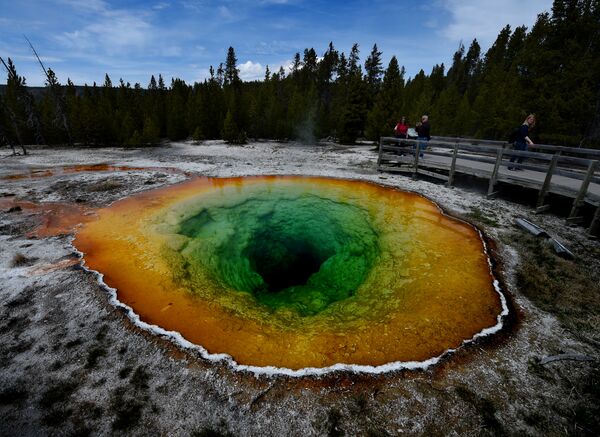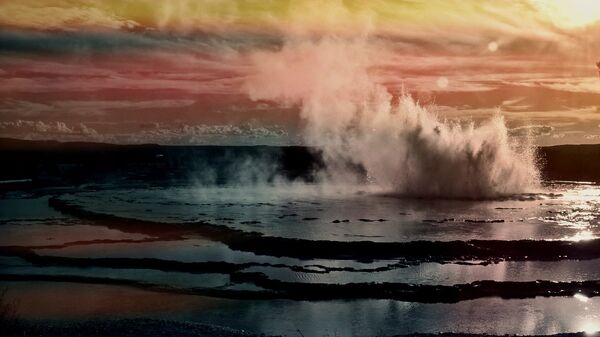A volcanologist at the University of Leicester has warned that the supervolcano at Yellowstone National Park could erupt at any time, unleashing a chain of potentially catastrophic consequences.
The monstrous volcano, located among the picturesque mountains and valleys of Yellowstone National Park in the United States, draws millions of visitors annually.
Steamboat Geyser erupted 32 times in 2018 eclipsing the previous high of 29 set back in 1964. This year's total eruptions: 48! Who was lucky enough to catch an eruption in this record-breaking year? #HappyNewYear2020https://t.co/k5kUZD7WvC pic.twitter.com/DQuM12g1Sy
— YellowstoneNPS (@YellowstoneNPS) December 31, 2019
“Yellowstone will erupt again, but it is not known when this will happen or on what scale - volcanoes do not erupt according to a timetable or schedule, and the next major eruption could be far away in the future,” Professor Michael Branney was quoted as saying by Mirror Online.
The consequences of such an eruption, according to Professor Branney, would depend on the size of the explosion.
“The area in and around Yellowstone would be buried in hot ash from pyroclastic density currents, killing the biota across the region. Volcanic ash would fallout further across Central and Eastern and USA and into the NW Atlantic ocean, burying crops, towns, preventing ground and air travel, hazardous to inhale, and choking-up drainage systems causing floods,” said the expert.
Supereruption
The volcanologist’s warning comes amid speculations about yet another supereruption of the caldera at Yellowstone National Park that could inflict devastation spanning several states.
The Yellowstone area has seen tremendous volcanic activity in its distant past.
Scientists studying the volcano suggest that massive eruptions of Yellowstone caldera have shaken the world three times – 2.1 million, 1.3 million, and 640,000 years ago respectively.
The last time the supervolcano erupted was around 640,000 years ago, with the eruption area collapsing upon itself, creating a giant sunken crater or caldera 1,500 square miles in area.
The magmatic heat behind that eruption still powers the park’s famous geysers, hot springs, fumaroles, and mud pots.

Yellowstone volcano is monitored around the clock by the Yellowstone Volcano Observatory (YVO) branch of the USGS. Any signs of imminent eruption will be preceded by earthquakes, ground uplift and unusual volcanic activity.


